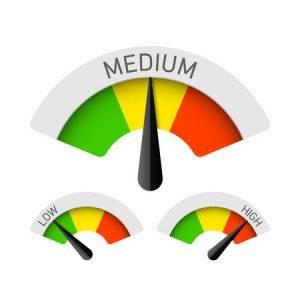 alhovik
alhovik
Inebriate, dipsomaniac, drug addict, drunkard, alcoholic, dope fiend, wino, junkie, crackhead, speed freak, dirty, strung out, blitzed, bombed, ripped, and on and on for more than two centuries. Stigmatizing words, slogans, and images of people experiencing alcohol and other drug (AOD) problems have fueled personal, public, professional, and policy pessimism--particularly pessimism about the personal resolution of AOD problems. Such iconic representations flow from ill-conceived ideas about the causes and course of severe AOD problems. Below is a small sampling of such ideas, expressed in the stigma-dripping language (note underlined words below) in which they are often conveyed.
1a. Substance abuse is a product of badness (psychopathy, criminality) and the only effective response to badness is public shaming, social shunning, and progressively severe punishment. Alcoholics and addicts (aka substance abusers) deserve ostracism and extrusion at a family level, spatial distance at a social level, and community expulsion at a policy level. Bad people should be treated badly. If the true person is the addiction-deformed Mr. Hyde and that Dr. Jekyll is only the polished mask of the true Hyde, then any notion of cure or recovery seems highly unlikely. After all, even a sobered Mr. Hyde remains diseased, dangerous, and deranged (aka evil) and potentially more lethally competent and cunning in his masked sober state, capable of incalculable deceit, manipulation, and predation.
1b. Addiction is the product of a chronic brain disease. Hearing chronic, listeners assume untreatable, permanent, and life-shortening; hearing hijacked brain, listeners understandably assume that this brain/person is broken, unpredictable, deranged, and dangerous. (I have argued in an earlier missive that communicating the neuroscience of addiction without simultaneously communicating the neuroscience of recovery and the prevalence of long-term recovery will increase the stigma facing individuals and families experiencing severe alcohol and other drug problems and that the brain disease paradigm could create new obstacles for social inclusion of people in recovery and provide a rational for coercive, invasive, and harmful interventions.)
2. The end-course of alcoholism and other drug addictions lies in only four limited outcomes: a) complete and enduring abstinence achieved through medical or religious interventions, b) insanity, c) prolonged institutionalization, or d) death.
3. Addiction recovery is the exception to the rule. Addicts rarely if ever achieve permanent recovery and improved social functioning: "Once an addict, always an addict." Similar sentiment is conveyed through remarks such as, addiction treatment and recovery support groups are worthwhile even if they only help one person recover--again the notion that recovery is a rare miracle.
4. Addicts spread addiction within their own families Inter- and intra-generationally. "Addicts beget addicts." Therefore, the risks of addiction transmission via biopsychosocial influences must be reduced through laws mandating the surgical sterilization of addicts, the systematic removal of children from addicted parents, and the separation of younger siblings from an older addicted sibling. The former option is illustrated by inclusion of alcoholics and addicts in sterilization laws in the U.S. during the early 20th century and the more recent practice of paying bounties to addicted women for their agreement to be sterilized. The practice of de-parenting addicted women, particularly poor women of color, was widespread during the cocaine panic of the 1980s and 1990s and is rising within the current opioid crisis.
5. Addiction is socially contagious. Addiction is an infectious epidemic; addicts are disease carriers (the rotten apple in the barrel) who, for the protection of the community, warrant prolonged quarantine or extermination. The former is illustrated within the history of U.S. inebriate colonies and inebriate penal farms; the latter is illustrated by the inclusion of alcoholics and addicts within Nazi death camps, the extra-judicial killings in the Philippines, and recent advocacy of death penalty within U.S. drug laws.
Such ideas do not emerge in the vacuum of a scientific laboratory. Close examinations of these ideas reveal their historical origins as products of racial, class, and generational warfare, their manufacture or appropriation as weapons of political exploitation; their use to expand professional and institutional power; and the ways they have been used for purposes of financial profiteering. (See my earlier blog Who Profits from Addiction/Recovery Stigma).
This weaponization of stigma (and its embedded ideas and images) has many intended and unintended progeny, but none more enduring than the diminishment of hope for individuals and families affected by AOD problems.
IF YOU HAVE:
*been arrested/incarcerated for essentially your addiction status,
*lost custody of your children without clear evidence of child neglect or harm,
*faced the presumption that you were never going to stop using drugs,
*been provided Narcan, sterile needles, safe injection sites, and/or medications used to treat addiction without exposure to people in stable recovery and the offer of assertive linkage to recovery support resources,
*been refused admission for detoxification/treatment or castigated (as aretread, frequent flyer? or other pejorative label) due to your prior admissions, or have
*been kicked out of treatment for alcohol or other drug use (confirming your diagnosis by exhibiting inability to abstain and loss of control),
THEN, you have experienced the curse of low recovery expectations.
It is time our expectations were raised regarding the resolution of AOD problems. That will require a sustained campaign of recovery advocacy led by individuals and families sharing the lived experience of recovery and its many varieties. Widespread dissemination of recovery research findings may aid this process, but nothing will be more professional, politically, and socially powerful as the stories of people whose lives have been transformed by recovery. This is the gift that individuals and families are now bestowing on their communities and their countries. A day may soon come when the curse of low recovery expectations exists only as an artifact of history. What is needed is a low bar of entry for those seeking help for AOD problems, but a high bar of hope and expectations.
Next Week: More examples of low recovery expectations and a set of counter-ideas emerging from recent scientific studies that are elevating recovery expectations at personal and community levels.